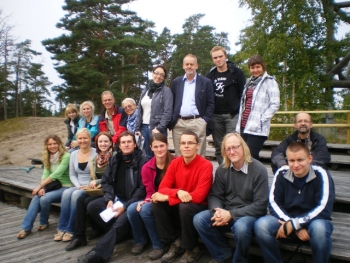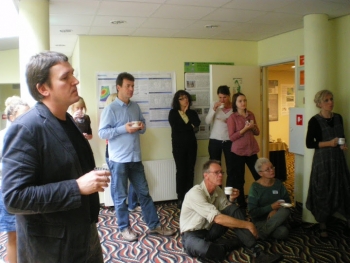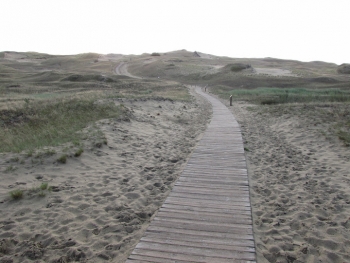Parnu Training School, 10-15 September, 2012
The Training School was organized by Hanna Raig and Alar Rosentau of the University of Tartu in cooperation with the University of Latvia, and Klaipéda University, Lithuania, and supported by the Doctoral School of Earth Sciences and Ecology, University of Tartu, by COST Action TD0902 ‘Submerged Prehistoric Archaeology and Landscapes of the Continental Shelf’, and by the Estonian Science Foundation Project: ‘Post-glacial coastline changes of the Baltic Sea and its relations with Stone Age settlements in Estonia’. The Training School was intended for doctoral students and early stage researchers of Earth Sciences and Archaeology and its aim was to develop knowledge and understanding of Stone Age coastal settlements and post-glacial sea-level indicators of the Baltic Sea. The training school consisted of introductory lectures, a poster session, and a geological-archaeological field-trip.
The first half of the week-long Training School, consisting of introductory lectures and a participants’ poster session, was held in the Hotel Strand Conference Centre in Pärnu, Estonia. Lectures were given by renowned international specialists who work together on Stone Age archaeology and/or post-glacial sea-level changes of the Baltic Sea, making the session truly interdisciplinary. Prof. Geoff Bailey talked about submerged prehistoric landscapes, the SPLASHCOS project and the nature and challenges of interdisciplinary and multidisciplinary research on submerged landscapes. Further presentations were given by Prof. Aivar Kriiska on Stone Age coastal settlements in the Eastern Baltic and the Pärnu area, by Dr Albertas Bitinas on the geological structures, processes and reconstruction of post-glacial water-level changes on the Lithuanian coast, by Dr Lembi Lõugas on prehistoric resource utilization and interpretation of faunal remains, by Dr Jüri Plado on the usage of ground-penetrating radar on, and by Dr. Alar Rosentau on the indicators and reconstructions of post-glacial relative sea-level changes.
All trainees were required to give a poster presentation about their research regarding prehistory and palaeo-landscapes. The session gave the ESRs a chance to talk about their study in front of international colleagues, discuss various problems and get direct feedback from specialists in the field.
The second half of the TS was spent on a field excursion travelling from the isostatically uplifting coast of Estonia to the subsiding coast in Lithuania studying past sea-level indicators and Stone-Age coastal settlements of this transitional zone. Different coring equipment was introduced during the excursion. A coring session in the Tolkuse Mire revealed layers of deposits representing successive post-glacial stages of the Baltic Sea. Two Estonian Stone Age sites, which are covered by marine deposits, were visited, and inundation and preservation of the cultural layers were observed. On the way southwards, several outcrops of buried peat and lake sediments at successively lower altitudes were visited. Prof. Laimdota Kalnina led the excursion through the most important sites in Latvia. Dr. Valdis Berzins talked about Latvian coastal settlements and took the group to an archaeological excavation of a Stone Age and Bronze Age site where many remarkable artefacts have been recently found. At the southernmost destination of the excursion, Prof. Algirdas Girininkas and Prof. Vladas Zulkus gave a presentation about a recently discovered submerged forest on the Lithuanian coast. Outcrops of lagoonal deposits and coastal landforms of the Curonian Spit (Lithuania) were visited.











